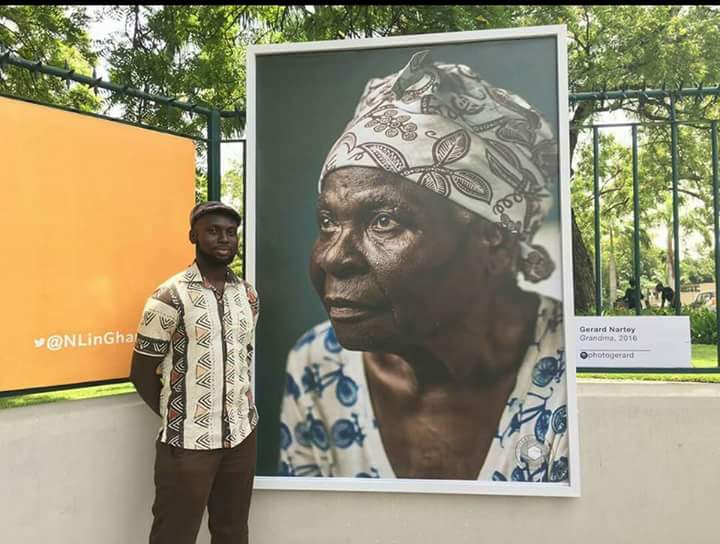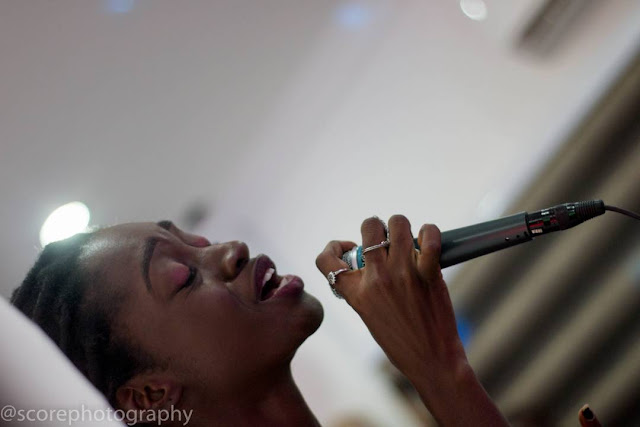The Creator Of Memories: Ghanaian Photographer, Gerard Nartey
If
photography were painting, Gerard Nartey would be legendary, only attributed in
reputation to Leonardo DaVinci and Van Goh (in their youth). The simplicity with
which he portrays complex concepts leaves remnants of nature’s beauty lingering
in pictorial frames. Photography itself freezes history to the admiration and
awe of posterity but little is known about how these great achievements in
photography happen.
Photographers
work diligently to give perspective to the ordinary, through which we draw the
comparison between the beauty we find without and that which we aspire within.
Thus starts the curiosity with which the works of Gerard Nartey draws, for
which his side of the story matters.
Elliot
Erwin says photography “is an art of observation, it’s about finding something
interesting in an ordinary place; it has little to do with things you see and
everything to do with how you see them”
To
Gerard, his ability to give you the lens through which he perceive things in
the light of photography makes what he does significant to him. To make you
realize something you haven’t realized seeing the same thing as he does, is no
mean feat.
“At
the core of art, for me, is creating something or expressing your opinion on
something,” Gerard Nartey asserts.
When
passion conspires with action, inspiration for creativity and beauty becomes
inevitability, giving birth to genius in
the process. At the risk of squandering
the credibility readers might bestow this piece through excessive adoration,
permit me to simple say Gerard Nartey has substance worthy of attention.
1
1
This
picture was taken in Winneba during the Aboakyrie festival. Everybody: the
young and old who could, were waiting at the banks of a water body waiting for
which of the two teams of warrior hunters who would catch a live deer to climax
the festivities. Naturally, the children frolicking attracted attention.
What
was it about this picture that excited Gerard? He said, “It was the moment. The
looks on the boy’s face to start with, the fact that he had leapt out of the
water, the drama around it, the environment, it was just everything around that
photo.”
Gerard
understands the fleeting nature of time. “Every moment is fleeting. You see
something and it’s gone [the next moment]. If you are not able to immortalize the
moment, that’s it. It is like a reputation achieved a long time ago. Unless you
keep telling people about it, It becomes insignificant” He explains. Capturing
the time and emotion of the waiting moment makes this picture valuable.
First
off, the subject was frozen in the peak of an upward thrust awaiting gravity’s
eventual pull. One cannot resist perceiving this picture metaphorically as if
to find some connection between life’s circumstances.
2
2

This
picture was taken at an Engagement (traditional wedding), a Synecdoche of the
union between two families. In Ghana, marriage is between two families and not
just a man and a woman. When the families get together, they greet before they
sit. It was in one of those moments. More so, a Ghanaian handshake is
incomplete without snapping their fingers. This makes this handshake
significant; a bond of agreement.
A
great picture may not just tell a story or have great composition but may also
leave something to the imagination, capture iconic moments, present the unique,
show over looked details, uses unique lighting & colour, use unique
perspective and at times, juxtapose concepts. This is the burden every
photograph carries to be worthy as art. These are the finer details some people
look for when they see images. This typical Ghanaian handshake is no different.
It has most of the elements of a wonderful picture, just showing enough for you
to imagine the story.
3 Grandma
The recent, most successful
picture of Gerard Nartey is ‘Grandma’. His work did not only find its place on
the fence wall of the Royal Netherlands Embassy but it placed 3rd
among several entries.
“What works for me in the picture was you get to feel her presence; who she was. It is like me observing my grand mom when she is not aware. She tends to sit and ponder a lot looking like that moment in the picture. It makes the picture very dear to me.”
“What works for me in the picture was you get to feel her presence; who she was. It is like me observing my grand mom when she is not aware. She tends to sit and ponder a lot looking like that moment in the picture. It makes the picture very dear to me.”
To be honest, I never saw the
appeal to this image. It left me with more questions than answers. A closer
look at the eyes gave me the retrospect with which my perception changed toward
this picture.
 | |||||||||
| By Gerard Nartey for the Royal Netherlands Embassy |
“Generally people like it. People
said they were drawn to it, they like the humanity they see in the picture. I think
when you look at the picture you feel like you know her. And people had that
connection with the picture. They said it is something that they can look at
for a long time.
Joana
Ade Nike, said it was quite dynamic. Joana added that she [Grandma] is beautiful
contrary to the stereotype that old people look frail, weak and have wrinkled
skin.
Her eyes are full of life. They look as if pondering over experience and good times; watching the young ones with understanding.
Her eyes are full of life. They look as if pondering over experience and good times; watching the young ones with understanding.
A
fan, Edna Otitiaku, interviewed for this article asked, “What does he do to
focus on the person [subject] yet still finds space to focus on the nature and
scenery around?”
Gerard has this to say when he
was later asked, “If I take a picture of your face without the environment,
nobody will know where the picture was taken, and I might not remember where it
was taken. But if I frame you within the space we are, I can remember.
Portraits are picture of people but then, there is also time and place to be
considered. So to be able to include that in a portrait, it adds some value to
the memory of the photo. If you have the opportunity to taking a picture here,
why not include the elements that define the place?”
4
4
This
picture is quite remarkable once you hear the story behind. The sun had left
its dying hue on the lake and landscape, as if to tell the photographer this is
his design. Gerard Nartey admitted that he had attempted to alter the colors
but realized later that he could not do justice to the picture so he enhanced
the colors that were.
It
was in those quite times he like to be outside the city and close to nature.
These are some of the images he reveals that no one will get to see these
wonders of nature if they have not been photographed because every moment is
fleeting.
It
is safe to conclude that, photography is Gerard Nartey’s passion. As he plainly
stated, “I’m passionate about photography. I am a very visual person.
Things that make me happy are, basically, the things I see (apart from
interacting with people). You see a spectacular sunset; you will never get to
see again. You take pictures and put them away. But as soon as you retrieve the
pictures, the feeling of the scene envelops you. The nostalgia is rekindled and
that is very special.”
Photography is a heartbeat as
evident in the life and work of Gerard Nartey. Every moment in life is a
photographic moment. It is just waiting for you to see it. To lend credence to
this; let me quote a statement by Gerard:
“They say interest is the
mother of attention. First you have to see the end result. You have to be able
to see that this [the scene or object] makes a significant image to begin with,
and that by the time you take the shot, it is something worthy of art.”





Comments
Post a Comment